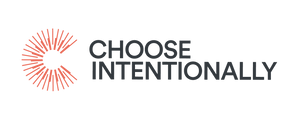New routines take time, give your family space to adjust.
-
KIDS 4 AND UNDER
- Your job is to be a role model.
- Little kids can hold the Intention cards while you say the Intentions out loud together or have them repeat after you.
- The activities on the back of the cards will help to reinforce the Intentions.
- Kids at this age benefit from hearing the positive reinforcement language on the back of the cards.
- Refer to the Intention throughout the day. For example, “We are working on being kind today. Let’s use kind words and hands please.”
- Remember to thank your child when you see the Intention in action. For example, “Thank you for being helpful.”
-
KIDS 5 -12
- At this age, your kids say the Intentions independently and are really a part of this process.
- Their brains are like sponges and they really thrive on living Intentionally right alongside you.
- Have your kids help you decide what to focus on and which activities to try to practice the Intention.
- Use the language on the back of the cards to coach your kids to coach your kids and shape their thoughts, attitudes and actions.
- The Circle Back questions are a great tool for really getting to know what’s going on in their world and in their headspace.
- Remember to thank your child when you see the Intention in action. For example, “Thank you for being responsible.”
-
TEENS 13 AND UP
- At this age, some of the time you’ll get them to be a part of this routine and sometimes not so much—that’s normal.
- Set the example by saying the Intentions within earshot of your teenagers— they’ll hear you even if they’re not interested in saying Intentions with you.
- Teens are more likely to entertain the activities on the back of the cards when they have input into choosing them.
- The coaching language on the back of the cards might get you an eye roll but just meet those eye rolls with a smile. Keep inviting them to join in on the process and absolutely keep those communication lines open by asking Circle Back questions when you hop in the car; these are great for checking in.
- Remember to thank your teen when you see the Intention in action. For example, “Thank you for being flexible.”


